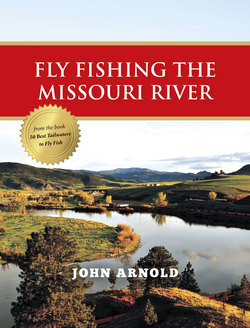Читать книгу Fly Fishing the Missouri River - John Arnold - Страница 3
ОглавлениеMissouri River (Central Montana)
Locations: The upper Missouri River and Holter Dam are 45 miles south of Great Falls and 45 miles north of Helena—both have daily commercial flights. Missoula and Bozeman are 2½ hours away, and Calgary, Alberta and Spokane, Washington approximately 6 hours away.
The longest river in North America, the Missouri begins at Three Forks, Montana, at the confluence of the Madison, Gallatin, and Jefferson Rivers. Most of the Missouri holds little interest to fly anglers, but the 35-mile, crystal-clear tailwater between Holter Dam and Cascade offers some of the best trout fishing in the West. Known for its massive hatches and phenomenal dry-fly fishing, this giant river also offers some of the most user-friendly wade and float fishing to be found in the state.
The Missouri’s waters flow reliably clear. During June runoff, when many Montana rivers are high and dirty, the Missouri is clear. This holds true even at high flows over 20,000 cfs. Off-color conditions are produced by small tributaries below Holter Dam (Little Prickly Pear Creek, Dearborn River, Stickney Creek) but typically last only a short time. Holter Dam is a hydro-generating gravity dam, and spills water from just below the top of the reservoir. Because of this, water temperatures fluctuate more dramatically than on many bottom-release Western tailwaters. This results in a wider temperature range and more diverse insect populations. Daily fluctuations are rare and small, as Holter is a run-of-the-river dam.
The village of Craig is the angling center. Lodging, fly shops, food and beverages, and the latest conditions can always be found in Craig, one of the last great rural “trout towns,” with a fun social scene during the summer.
The Holter region can be divided into three sections. From Holter Dam to the mouth of the Dearborn River, the Missouri flows at a moderate pace over a small limestone gravel bottom. This is classic “spring creek” water, with islands, side channels, and almost unlimited access. It offers fantastic dry, nymph, and streamer fishing.
From the mouth of the Dearborn River to Sheep Creek, the Missouri flows through the “Canyon.” Limestone cliffs surround the river, and the water is more reminiscent of a big freestone river. Faster riffles lead to large, deep pools. Riprap banks are common, and the water is more suited to attractor fishing and prospecting with nymphs and streamers. While
access is still plentiful, this section is most often fished from a boat.
